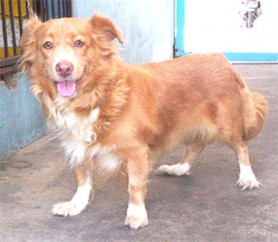I found the following in a text written by Drs Carlson and Giffin. It is exactly what we want to write about, so I am reproducing it with very little modification (see also last week’s column).
Lots of anatomical and physiological changes take place in the animal’s body as it gets older. The old dog is not as energetic as it was in its younger days. With reduced activity and loss of muscular tone, the neck and body of an older dog take on a more bulky appearance and his extremities appear thinner, especially the thighs and upper parts of the front legs. His abdomen may sag, his back begins to swag, and elbows wing-out. His muscles may begin to shake when he exerts himself.
Stiffness in the joints due to osteoarthritis is made worse by drafts and by sleeping on cold damp ground or on cement pads. His bed should be indoors in a warm dry spot. Arthritic dogs, especially large and heavy ones, should be given a padded surface on which to sleep. Toy dogs may need to be covered at night.
Moderate exercise helps to keep the joints supple and should be encouraged. However, the older dog should not be exercised beyond his normal level of activity. A specific condition (such as heart disease) actually may require that exercise be restricted. Although there is no way to stop the progress of arthritis, analgesics such as aspirin can relieve the pain and enable the dog to lead a more active life.
The coat of an older dog mats easily and his skin becomes dry and scaly due to reduced activity of the oil producing glands. Small skin tumours are common. Pads of the feet may be thick, overgrown, and cracked. Stiff old dogs have trouble keeping their anal and genital areas clean. Frequent grooming and bathing are necessary to keep them clean and free from parasites and skin diseases. The addition of some bath oil to the final rinse helps to soften the skin and keep it in better condition. Toenails need to be trimmed more often, unless they are worn down by activity.
For one thing there is an obvious hearing loss. Actually, I think that this might be the cause of many a road accident. And, of course, there is no practical cure for senile deafness in dogs. However, if there is wax build-up that is promoting the deafness, then we should remove the wax.
Let me caution though, that the excessive cleaning of the ears is really not desirable, because a certain amount of wax should always remain in the ear. It seems that it is needed to maintain the health of the tissues of the ear.
We can clean the ear easily with a cloth moistened with baby oil. Wrap the cloth around your finger and gently wipe the ear canal as far as your finger can reach. In the same manner, the inner surface of the ear flap can be cleansed.
Then there is the gradual loss of sight. Well, the dog is really not an ‘eye’ animal. ‘Rex’ relies on smell and his sense of hearing to make him aware of his environment. He does not see too well at the best of times. Older dogs tend to exhibit a bluish-greyish haze on the lens (that’s the structure that one sees through the pupil of the eye).

The scientists have a term for this deterioration of the lens. It is called ‘nuclear sclerosis’ which is quite distinct from a cataract condition. Old dogs, unlike humans, don’t acquire the senile cataract too often. Also, the dog’s eyesight can deteriorate because of several ailments, many of them affecting the retina itself.
If the old dog does develop a cataract, your vet can surgically remove the problem. However, I would advise against this intervention, since – as I have said above – dogs don’t need their eyesight that much; they rely on the senses of smell and hearing. Also you don’t want to place an old dog under a heavy anaesthetic. In any case, the old dog tends not to wander around too far from his home, so the likelihood of him being knocked down is relatively remote. Of course, if the dog’s sense of smell is impaired and he almost deaf, he could be involved in an accident. All the more reason to be more protective of an old dog.
Next week, we will look at the changes in the old dog’s mouth (his loss of teeth) and his inability to process food the way he used to do when he was young.
Please implement disease preventative measures (vaccinations, routine dewormings, monthly anti-heartworm medication, etc) and adopt-a-pet from the GSPCA’s Animal Clinic and Shelter at Robb Street and Orange Walk, if you have the wherewithal to care well for the animals. Do not stray your unwanted pets, take them to the GSPCA’s Clinic and Shelter instead. If you do not wish your pet to have puppies or kittens, you may exploit the GSPCA’s free spay and neutering programme. If you see anyone being cruel to an animal, or if you need any technical information, please get in touch with the Clinic and Shelter by calling 226-4237.










